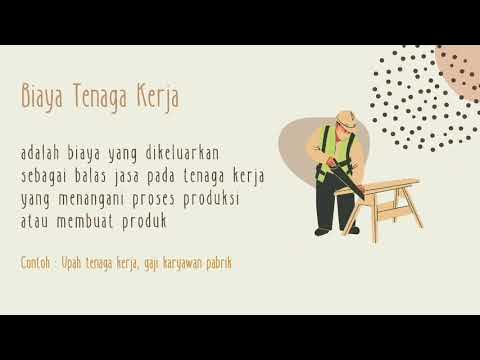Perhitungan Biaya Produksi - Materi Prakarya dan Kewirausahaan Kelas X KD 3.4/4.4
Summary
TLDRThis video script offers an in-depth explanation of production cost calculation, focusing on key components like raw materials, labor costs, and overheads. It provides a detailed breakdown of how to compute the costs involved in producing goods, using the example of making masks or odading (a traditional Indonesian snack). The script includes practical guidance on calculating direct and indirect labor costs, raw materials, and operational expenses. The aim is to help viewers understand how to calculate production costs, set prices, and determine profitability in a small business or craft production setting.
Takeaways
- 😀 Understanding production costs is essential when starting a craft business, such as making face masks or other handmade products.
- 😀 Production costs include all expenses incurred to create a product, like raw materials, labor, and overheads, which increase the product's value.
- 😀 A production period can vary depending on the company, but it's typically calculated monthly for most businesses.
- 😀 There are key components in calculating production costs: raw materials, supplementary raw materials, direct labor, indirect labor, and overhead costs.
- 😀 Raw materials costs are the primary expenses for purchasing essential materials like fabric and rubber when making a product like a mask.
- 😀 Supplementary raw materials are additional materials that support production, such as thread and needles for mask-making, but are not the primary components.
- 😀 Direct labor costs are wages paid to workers directly involved in the production process, such as those sewing or assembling the product.
- 😀 Indirect labor costs are wages paid to workers who aren't directly involved in production, like administrative or marketing staff.
- 😀 Overhead costs cover operational expenses like rent, utilities, and transport, which are necessary for the business to run but don't directly contribute to production.
- 😀 To calculate the total cost of production, sum up all the relevant costs (raw materials, labor, and overhead), and divide it by the number of products produced.
- 😀 Businesses must also calculate the selling price by adding the desired profit margin to the cost of production, ensuring the price covers all expenses and includes profit.
Q & A
What is the essence of production in the context of calculating production costs?
-The essence of production is to transform raw materials into products with a higher value, such as turning fabric into clothing or a simple piece of cloth into a doll, thus increasing its market value.
What are the key components involved in calculating production costs?
-The key components in calculating production costs include: raw materials, supplementary materials, direct labor costs, indirect labor costs, and overhead costs.
What are 'raw materials' in the production cost calculation?
-Raw materials are the primary materials purchased for the production of a particular item. For example, when making a mask, the raw materials would be the fabric and elastic bands.
What are 'supplementary raw materials' in production, and can you provide an example?
-Supplementary raw materials are additional materials used to support the production process. An example would be thread and needles when manually making masks.
How are 'direct labor costs' defined in production cost calculation?
-Direct labor costs are expenses paid to workers directly involved in the production process, such as factory workers assembling a product or operating machinery.
What is meant by 'indirect labor costs'?
-Indirect labor costs refer to wages paid to employees who are not directly involved in production, such as marketing staff, accountants, or administrative personnel.
Can you explain what 'overhead costs' include in production?
-Overhead costs include operational expenses like electricity, rent, and transport fees that are not directly tied to the production process but are necessary for running the business.
How is 'total production cost' calculated from individual components?
-Total production cost is calculated by adding together raw materials, supplementary materials, direct labor costs, indirect labor costs, and overhead costs.
What is the formula for calculating the cost of goods sold (COGS)?
-The cost of goods sold (COGS) is calculated by dividing the total production cost by the number of units produced during a specific period.
How is the desired profit calculated when determining the price of a product?
-The desired profit is calculated by multiplying the cost of goods sold by the percentage of profit desired. For example, if the production cost is $30 and the desired profit is 50%, the profit would be $15 per unit.
Outlines

此内容仅限付费用户访问。 请升级后访问。
立即升级Mindmap

此内容仅限付费用户访问。 请升级后访问。
立即升级Keywords

此内容仅限付费用户访问。 请升级后访问。
立即升级Highlights

此内容仅限付费用户访问。 请升级后访问。
立即升级Transcripts

此内容仅限付费用户访问。 请升级后访问。
立即升级5.0 / 5 (0 votes)






